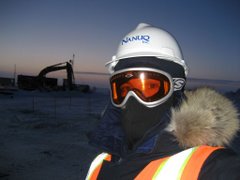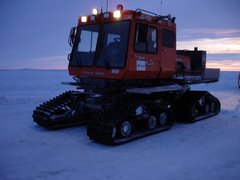Busy, busy, busy! Sorry I'm a week delayed with this update but things have been a bit hectic. All is well though as I'm beginning to wind down things here at the DPRI and am preparing for a visit to Tokyo for summer program closing ceremonies (the first photo at right is of the fine gents I've been working for all summer at the DPRI.) Then it's off to Okinawa for a week of scuba diving!
Last weekend was the most action packed thus far. I started by joining three friends (Rich, Ruth, and Luke) from Great Britian to go see a fireworks display down in Osaka. The display was in honor of the founder of a rather strange group called the Liberty Church the details of which are rather sketchy at this point; I've heard through the grapevine that they may be a bit cultish. In any case they put on a great display and boy was it packed. So crowded in fact that Rich and I missed the last train back to Uji and ended up sleeping on Ruth's floor for the night (thanks Ruth!)
The next day was spent with Rich and Ben (another NHMJer) at the Osaka aquarium. It doesn't quite stack up to the good old John G. Shedd Aquarium in Chi town but it was still pretty spectacular. I had a blast experimenting with my digital camera trying to get good shots of the aquatic life through glass with blue washed light and while surrounded by about a million other tourists. Highlights included a whale shark (amazing but somehow sad to see something that big in captivity), a great array of jelly fish, and thelargest crab species anywhere (Japanese Spider Crab). That evening was followed up with a birthday celebration for Rich at an all you can eatbeer garden on top of the Gion Hotel in Kyoto.
Sunday, Ben and I hit Osaka again to visit the Osaka castle and to go to an Osaka Kintetsu Buffaloes baseball game. I am now officialy a Buffaloes fan (don't worry Pop, the Go!Go! Whitesox are still my favorite team.) We ended up getting in for free as some kind gent had two tickets he couldn't use. We had planned on the cheap seats but were offered two other seats in the official fan section by a very nice eye doctor and his girlfriend from Kyoto; as it turned out he had studied in the US and spoke English very well. The game was pretty good and kept exciting for us as the fans went nuts the entire time their team was up to bat. No, really, I mean non-stop buck wild cheering, flag waving, stomping, trumpet playing fanaticism with a different cheer for each batter. There were two US players for Osaka, Toughy Rohdes and Ken Bairnes (a pitcher from the LA Dodgers on "farm relief"). The most amazing thing I saw during the game was the pitcher from the opposing team (Chibba Lotte Marines.) This guy had a side arm pitch that included totaly bending at the waste to release the ball from below his own knee i.e. he pitched predominantly up towards the batter as opposed to down with an overhand pitch; mind boggeling. If anyone knows of a US pitcher with a similar style I'd definately like to hear about it.
I hope everyone is having a good end to the summer an isn't to bummed about going back to school, end of vacation, etc. Talk to you soon.
Matt

Dr. Susumu Iai, Matt, and Dr. Tetsuo Tobita, Uji, Japan, July 2003(Sorry Tetsuo and I are so sweaty but there wasn't any AC in the lab until last week! Atsui!)

Osaka Buffaloes Fans... Go Go Buffaloes!, Osaka, Japan, August 2003


Osaka Aquarium Jelly Fish, Osaka, Japan, August 2003

Sunset over Kyoto from the Gion Hotel Roof, Kyoto, Japan, August 2003

Kintetsu Buffaloes Osaka Dome, Osaka, Japan, August 2003







